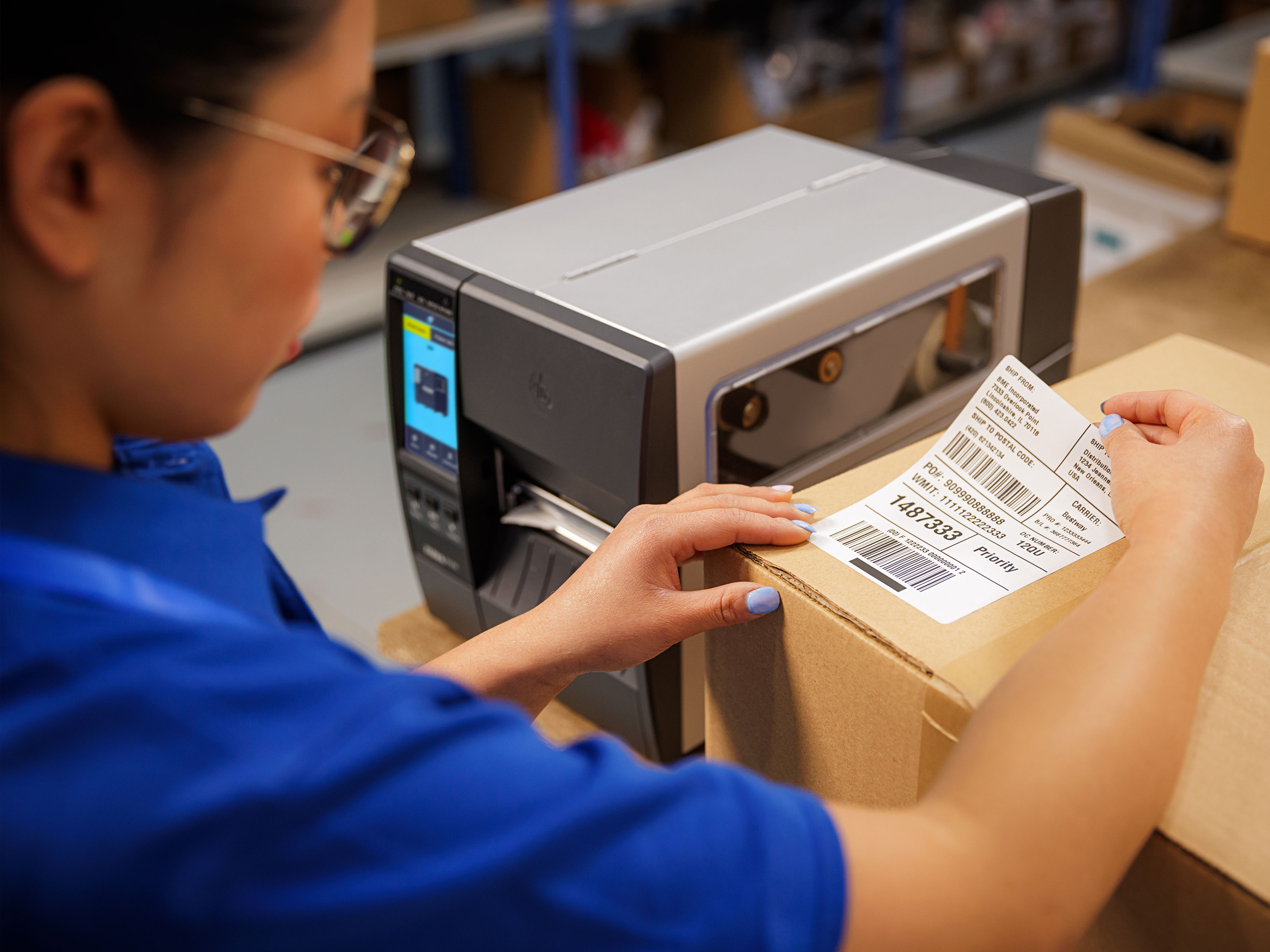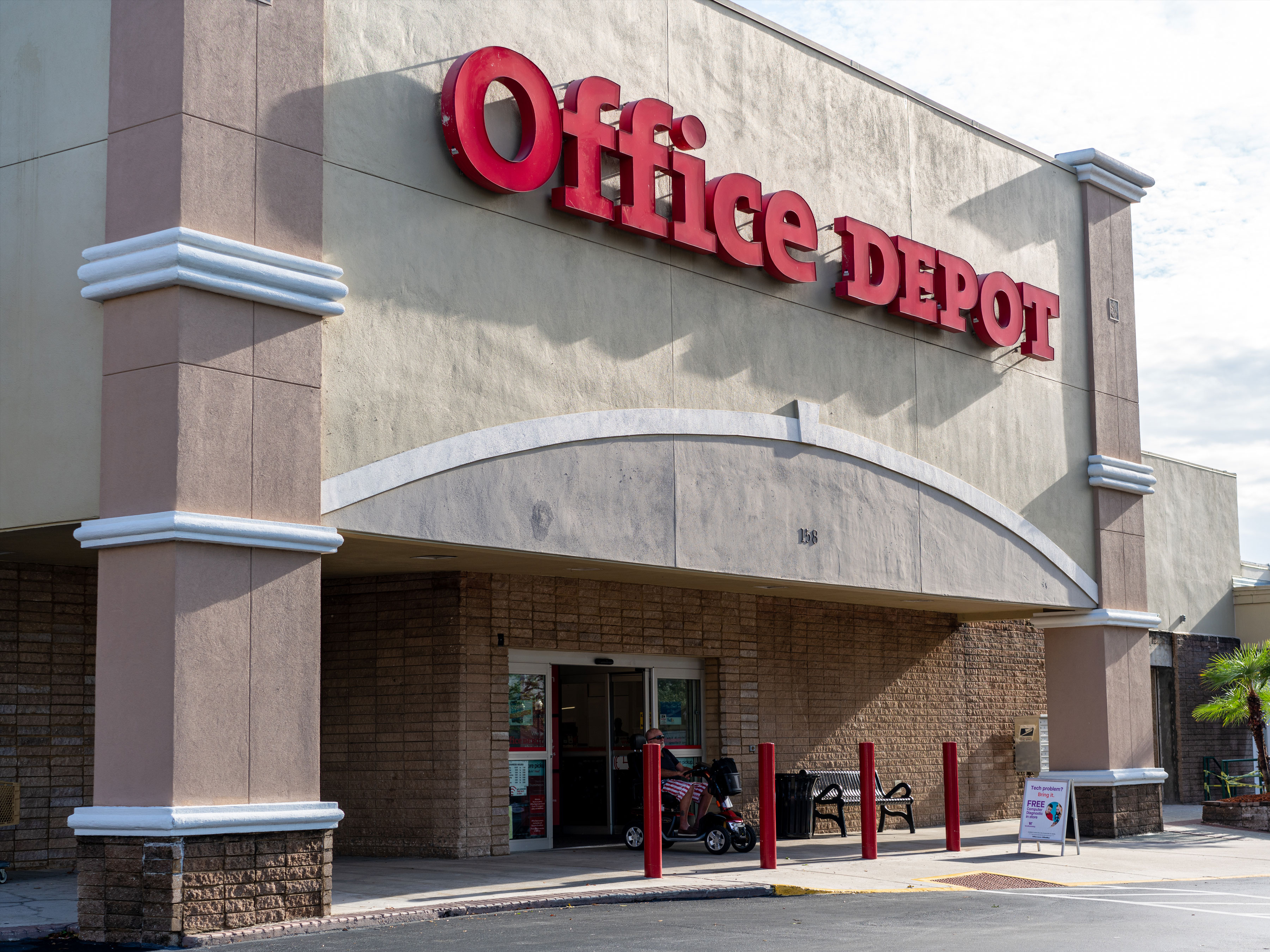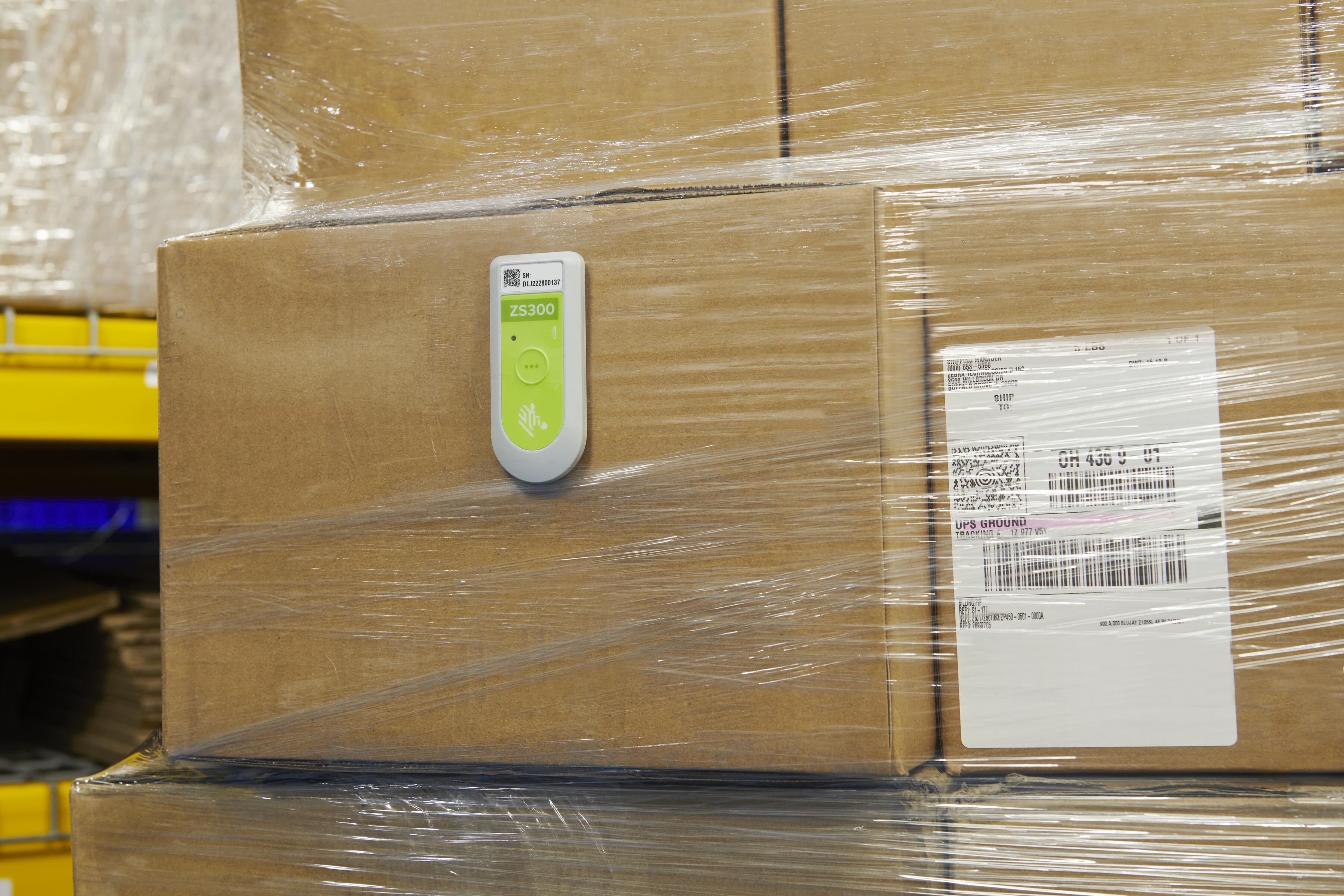Transform retail operations with Zebra’s retail technology solutions, featuring hardware and software for improving inventory management and empowering teams.
Streamline operations with Zebra’s healthcare technology solutions, featuring hardware and software to improve staff collaboration and optimise workflows.
Enhance processes with Zebra’s manufacturing technology solutions, featuring hardware and software for automation, data analysis, and factory connectivity.
Zebra’s transportation and logistics technology solutions feature hardware and software for enhancing route planning, visibility, and automating processes.
Zebra's hospitality technology solutions equip your hotel and restaurant staff to deliver superior customer and guest service through inventory tracking and more.
Zebra's market-leading solutions and products improve customer satisfaction with a lower cost per interaction by keeping service representatives connected with colleagues, customers, management and the tools they use to satisfy customers across the supply chain.
Empower your field workers with purpose-driven mobile technology solutions to help them capture and share critical data in any environment.
Zebra's range of mobile computers equip your workforce with the devices they need from handhelds and tablets to wearables and vehicle-mounted computers.
Zebra's desktop, mobile, industrial, and portable printers for barcode labels, receipts, RFID tags and cards give you smarter ways to track and manage assets.
Zebra's 1D and 2D corded and cordless barcode scanners anticipate any scanning challenge in a variety of environments, whether retail, healthcare, T&L or manufacturing.
Zebra's extensive range of RAIN RFID readers, antennas, and printers give you consistent and accurate tracking.
Choose Zebra's reliable barcode, RFID and card supplies carefully selected to ensure high performance, print quality, durability and readability.
Zebra's rugged tablets and 2-in-1 laptops are thin and lightweight, yet rugged to work wherever you do on familiar and easy-to-use Windows or Android OS.
With Zebra's family of fixed industrial scanners and machine vision technologies, you can tailor your solutions to your environment and applications.
Zebra’s line of kiosks can meet any self-service or digital signage need, from checking prices and stock on an in-aisle store kiosk to fully-featured kiosks that can be deployed on the wall, counter, desktop or floor in a retail store, hotel, airport check-in gate, physician’s office, local government office and more.
Discover Zebra’s range of accessories from chargers, communication cables to cases to help you customise your mobile device for optimal efficiency.
Zebra's environmental sensors monitor temperature-sensitive products, offering data insights on environmental conditions across industry applications.
Zebra's location technologies provide real-time tracking for your organisation to better manage and optimise your critical assets and create more efficient workflows.
Enhance frontline operations with Zebra’s AI software solutions, which optimize workflows, streamline processes, and simplify tasks for improved business outcomes.
Empower your frontline with Zebra Companion AI, offering instant, tailored insights and support to streamline operations and enhance productivity.
The everything you need to rapidly and cost effectively develop high-performance AI vision applications on Zebra mobile computers.
Zebra Workcloud, enterprise software solutions boost efficiency, cut costs, improve inventory management, simplify communication and optimize resources.
Keep labour costs low, your talent happy and your organisation compliant. Create an agile operation that can navigate unexpected schedule changes and customer demand to drive sales, satisfy customers and improve your bottom line.
Drive successful enterprise collaboration with prioritized task notifications and improved communication capabilities for easier team collaboration.
Get full visibility of your inventory and automatically pinpoint leaks across all channels.
Reduce uncertainty when you anticipate market volatility. Predict, plan and stay agile to align inventory with shifting demand.
Drive down costs while driving up employee, security, and network performance with software designed to enhance Zebra's wireless infrastructure and mobile solutions.
Explore Zebra’s printer software to integrate, manage and monitor printers easily, maximising IT resources and minimising down time.
Make the most of every stage of your scanning journey from deployment to optimisation. Zebra's barcode scanner software lets you keep devices current and adapt them to your business needs for a stronger ROI across the full lifecycle.
RFID development, demonstration and production software and utilities help you build and manage your RFID deployments more efficiently.
RFID development, demonstration and production software and utilities help you build and manage your RFID deployments more efficiently.
Zebra DNA is the industry’s broadest suite of enterprise software that delivers an ideal experience for all during the entire lifetime of every Zebra device.
Advance your digital transformation and execute your strategic plans with the help of the right location and tracking technology.
The Zebra Aurora suite of machine vision software enables users to solve their track-and-trace, vision inspection and industrial automation needs.
Zebra Aurora Focus brings a new level of simplicity to controlling enterprise-wide manufacturing and logistics automation solutions. With this powerful interface, it’s easy to set up, deploy and run Zebra’s Fixed Industrial Scanners and Machine Vision Smart Cameras, eliminating the need for different tools and reducing training and deployment time.
Aurora Imaging Library™, formerly Matrox Imaging Library, machine-vision software development kit (SDK) has a deep collection of tools for image capture, processing, analysis, annotation, display, and archiving. Code-level customisation starts here.
Aurora Design Assistant™, formerly Matrox Design Assistant, integrated development environment (IDE) is a flowchart-based platform for building machine vision applications, with templates to speed up development and bring solutions online quicker.
Designed for experienced programmers proficient in vision applications, Aurora Vision Library provides the same sophisticated functionality as our Aurora Vision Studio software but presented in programming language.
Aurora Vision Studio, an image processing software for machine & computer vision engineers, allows quick creation, integration & monitoring of powerful OEM vision applications.
Adding innovative tech is critical to your success, but it can be complex and disruptive. Professional Services help you accelerate adoption, and maximise productivity without affecting your workflows, business processes and finances.
Zebra's Managed Service delivers worry-free device management to ensure ultimate uptime for your Zebra Mobile Computers and Printers via dedicated experts.
Find ways you can contact Zebra Technologies’ Support, including Email and Chat, ask a technical question or initiate a Repair Request.
Zebra's Circular Economy Program helps you manage today’s challenges and plan for tomorrow with smart solutions that are good for your budget and the environment.

Smarter Labeling: How Automation Software Transforms Print Efficiency & Quality
Label printing plays an important role in ensuring operational efficiency, product traceability, and regulatory compliance in industries like manufacturing, transportation & logistics, retail, and healthcare. Whether it's labeling parts on a production line, shipping packages, tagging retail inventory, or identifying medical supplies, the accuracy and consistency of labels directly impact business outcomes and the global supply chain.
Also, as organizations are working through staffing gaps or starting to rely more on layered workforces—using a mix of full-time, part-time, and temporary or contract workers—label printing can become even more prone to errors and inefficiencies, especially if it’s a manual process. Common challenges include inconsistent label quality, manual data entry mistakes, and difficulty maintaining compliance with industry regulations.
Label print automation software offers a solution. By integrating with existing business systems and streamlining label printing, automation reduces human error, boosts productivity, and ensures consistent quality across operations. Let’s explore what label print automation is, how it works, its benefits, and a real-world success story.
What is automated label printing?
Automated label printing replaces the manual task of creating and printing a label with an automated process that is faster and more efficient. The goal of print automation is to minimize touch points within the labeling process by reducing errors with human interaction. Approaches to automated label printing could look like label design software with APIs or out-of-the-box print automation software.
A complete label print automation solution connects your label design software and Zebra printing technologies with your existing WMS, MES, ERP system, LIMS, or custom application. Print automation software can quickly trigger a print job using the data from your business system. It can integrate with REST APIs, automatically populate your labels, and print to an unlimited number of printers.
Example of what this looks like in the real world
Using TEKLYNX print automation software, SENTINEL, you click “print” from your ERP system. Behind the scenes, a flat file (.txt, .csv, .xml, etc.) is automatically dropped into a SENTINEL, triggering the label printing process. No manual steps or print delays, just seamless automation and accurate labels.
What are the benefits of label print automation?
· Reduce IT interaction: Little to no maintenance is required once print automation software is configured with your system.
· Faster label printing: Through the elimination of manual data entry and business system integration, label printing process speed could double.
· Automatically convert data to labels: Print automation software automatically populates the labels for you by pulling the data directly from your business system.
· Ensure label accuracy: Automating your label printing process reduces human interactions which decreases the opportunity for error.
· More user-friendly label printing: Reduce stress and save time by eliminating unnecessary steps to create a simpler labeling process for your print users.
Success story from the manufacturing industry
TaylorMade Golf, a leading manufacturer of high-performance golf equipment, faced significant challenges in their labeling process. “Our biggest issue was the lack of flexibility in label data sources and the restrictions it imposed on our business processes,” said Rafal Janus, Senior Manager of Solutions Development at TaylorMade. Plus, changes to their labels required a third party and any significant changes cost approximately $8,000.
After implementing SENTINEL, TaylorMade now manages their labeling process internally, eliminating the need for third-party software maintenance. This change alone reduced their total equipment cost by 50%, showing a positive return on investment (ROI).
TaylorMade currently has five installations of SENTINEL around the world and the ability to print to unlimited printers across their entire enterprise. Throughout their facilities, TaylorMade primarily uses Zebra printers along with the native label printer drivers developed by TEKLYNX to print highly accurate label designs at fast print speeds. As a result, labeling accuracy rose from 85% to an impressive 99%. Read the full case study.
What’s the best way to implement automated label printing?
Assess your current workflows
Auditing your labeling system and processes helps you make sure you’re compliant with changing regulations, your labeling system and processes support operational efficiency rather than hinder it, and you’re able to easily scale as your business grows.
How do you determine if there’s room for improvement? How do you look for hidden inefficiencies?
· Conduct an internal audit of software: Review versions, licenses, and compatibility with other software.
· Get feedback from design and print users: Ask your team what slows them down.
· Track label error rate: Monitor the number of misprints over a given time.
· Analyze recall root cause: Determine if labeling errors contributed to past issues.
· Consult with experts: Your labeling software provider can help assess your current labeling process for improvements, advise you on how to merge two labeling environments, and show you lean labeling strategies to support sustainability.
Choose software that integrates with your existing systems
Integrating label print automation software with your existing business systems can expand your ROI by using infrastructure you already own.
Work with your labeling software provider to review your technological environment. They can help you determine the best approach to automated label printing and implement changes or new solutions with as little disruption as possible.
Monitor your progress
Track key performance indicators like print speed, label error rate, misprint frequency, labeling-related recalls, and (internal) print user satisfaction to assess the impact of your changes. Regularly reviewing these metrics will help fine-tune your label printing process over time and ensure it continues to meet your business needs.
It’s time to label smarter with automation
Automated label printing helps businesses improve efficiency, reduce labeling errors, and maintain consistent quality across operations. Instead of allocating budget to entirely new infrastructure, companies can enhance their labeling processes by building on the systems they already use—making automation a practical and cost-effective investment.
Learn more about TEKLYNX label software for Zebra printers.
Zebra Developer Blog
Zebra Developer BlogZebra Developer Blog
Are you a Zebra Developer? Find more technical discussions on our Developer Portal blog.
Zebra Story Hub
Zebra Story HubZebra Story Hub
Looking for more expert insights? Visit the Zebra Story Hub for more interviews, news, and industry trend analysis.
Search the Blog
Search the BlogSearch the Blog
Use the below link to search all of our blog posts.
Most Recent
Legal Terms of Use Privacy Policy Supply Chain Transparency
ZEBRA and the stylized Zebra head are trademarks of Zebra Technologies Corp., registered in many jurisdictions worldwide. All other trademarks are the property of their respective owners. Note: Some content or images on zebra.com may have been generated in whole or in part by AI. ©2025 Zebra Technologies Corp. and/or its affiliates.




